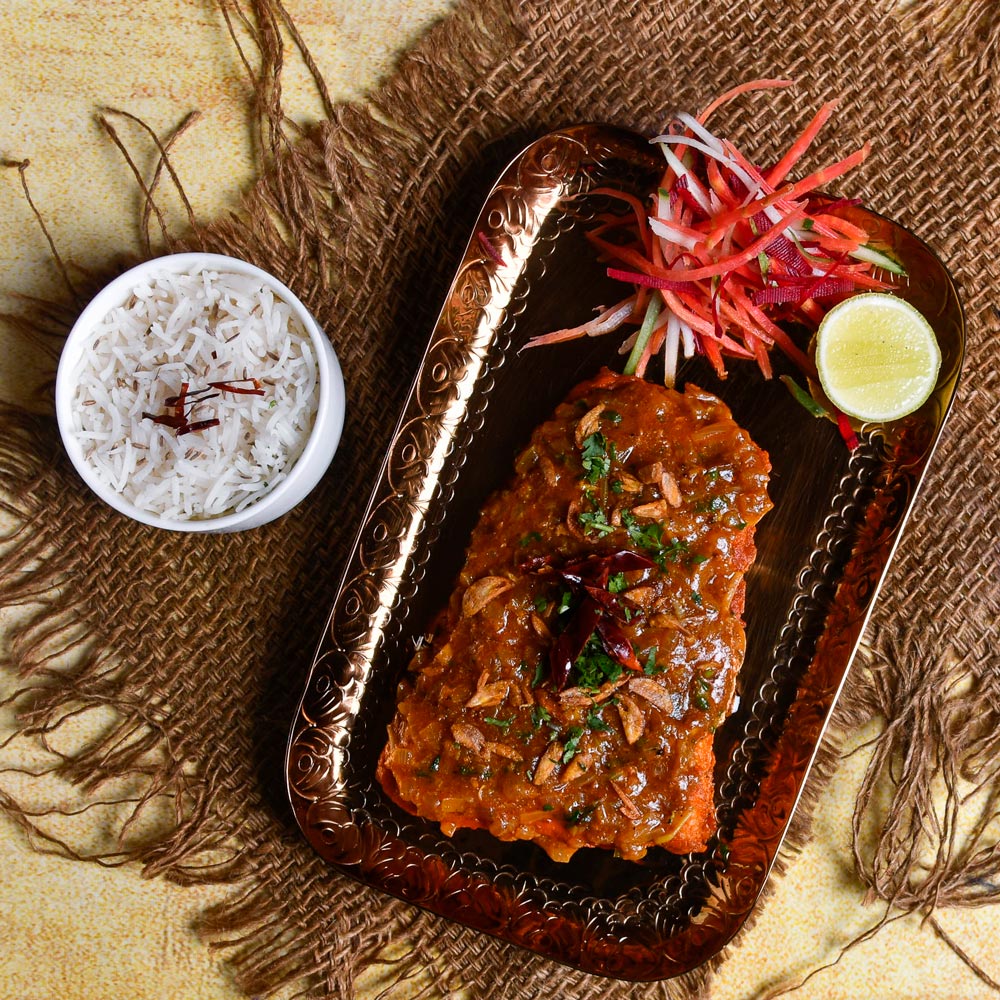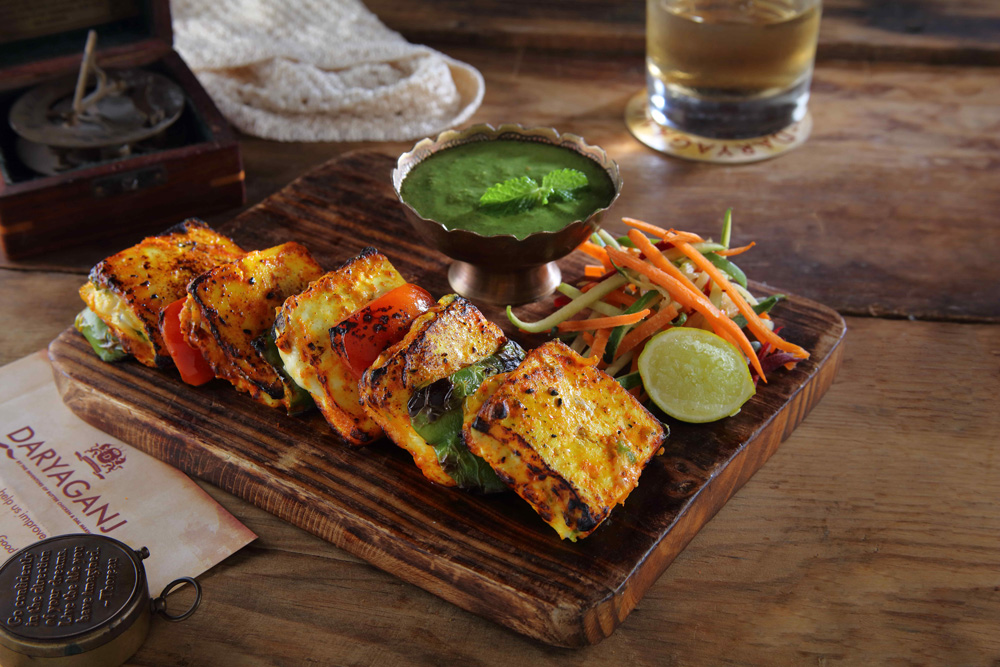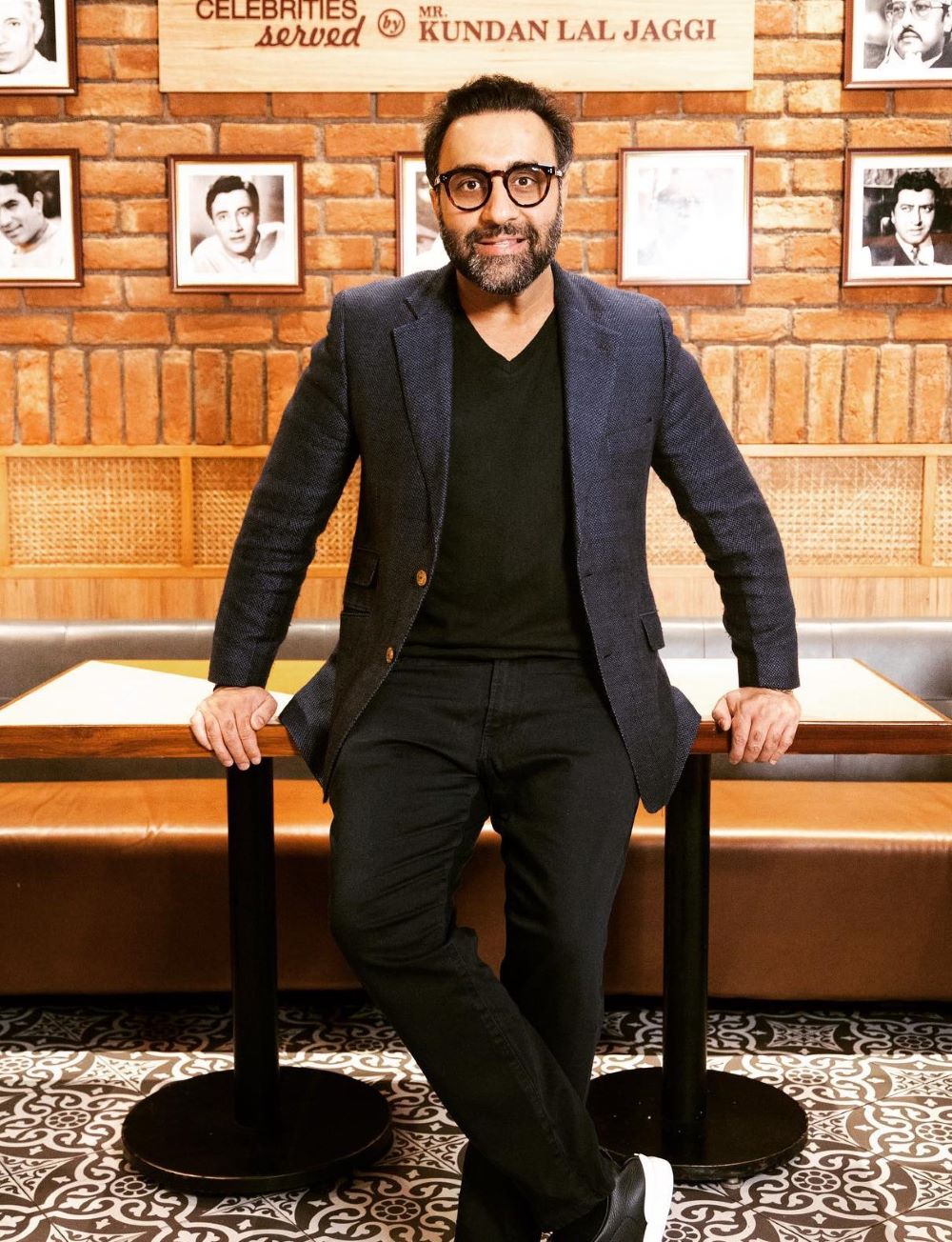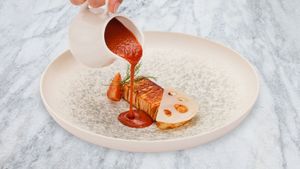“Punjabi food is a symphony of flavours woven from the purest ingredients. That is how I would introduce the cuisine to someone who doesn't know Punjabi food too well,” begins Amit Bagga, co-founder, CEO and CMO of Daryaganj Hospitality. The restaurant presented its decadent food at the JW Marriott Bengaluru recently, its first popup in the city. “The cuisine embraces the goodness of dairy, with staples like ghee and white butter lending a luxurious touch to the dishes. These ingredients aren't just delicious; they're also known for their health benefits when enjoyed in moderation," Bagga added.
Okay, sold. Where’s our Dal Makhani already?

The nuances of Punjabi food go deeper than the two iconic dishes that pretty much are like the mascots of the cuisine: the Dal Makhani and the Butter Chicken. Yes, when served with naan or laccha paratha, it’s difficult to turn it away but Bagga will tell you that there is so much more to Punjabi food than it just being labelled as ‘North Indian food’.
“I believe that categorising Punjabi cuisine as part of North Indian cuisine is a common practice, especially for those unfamiliar with the intricacies of Indian food. While this classification serves as a helpful starting point, it overlooks the distinctiveness of Punjabi cuisine. In reality, Punjabi cuisine has its own unique identity shaped by influences from Delhi and beyond. Many are unaware that numerous iconic Punjabi dishes were not only invented but also popularised in Delhi, extending their influence beyond Punjab's borders. However, this doesn't negate the distinctiveness of Punjabi cuisine itself,” he explains.

One of the primary errors made by foreign Indian restaurants is conflating Mughlai cuisine with Punjabi cuisine. These are distinct culinary traditions within North Indian cuisine, each with its own unique characteristics and flavours.
“Mughlai food differs significantly from Punjabi cuisine, which is deeply rooted in the agrarian culture of Punjab. Additionally, it's important to recognise the distinctiveness of Delhi’s street food, such as the iconic chaat, which represents a separate culinary genre altogether. By acknowledging and respecting the individual identities of these cuisines, restaurants can offer a more authentic and diverse dining experience to their patrons,” Bagga adds.
Stick to the roots

Punjabi food is defined by its wholesomeness, the taste of home at every bite, but Indian food in general has been subjected to pretty decent modernisation in the past few years. Does that sit well with Bagga and the team at Daryaganj and would he want to see Punjabi food becoming more contemporary? “The concept of modernising Punjabi cuisine while preserving its authenticity resonates deeply with our brand ethos. We focus on offering a contemporary dining experience, engaging all the five senses with a seamless blend of the past and the present. However, our commitment to maintaining the pureness of Punjabi cuisine remains unwavering,” he clarifies.
What bothers the man is the trend where restaurants compromise on the integrity of Indian cuisine by resorting to shortcuts, excessive spicing, and the use of packaged ingredients. “I firmly believe that such practices undermine the essence of Indian cuisine. Brands such as Indian Accent have successfully popularised modern Indian cuisine worldwide while staying true to the original flavours, ingredients, and techniques. They've simply presented it in a more appealing manner,” he further explains. Needless to say, Bagga isn’t a big fan of restaurants that play around too much with flavours or in fact the roots of any cuisine.

From modernised to micro, it’s quite fascinating how even within the State, which is about 50,362 square-kilometres in area, one would find a lot of variations even in the local food. In all fairness, the entire country is like that. “Despite common perceptions, Punjab boasts a significant vegetarian population, comprising approximately 40 per cent of its residents. This dietary preference is deeply intertwined with the agrarian roots of the region, where farming is the primary occupation. Contrary to popular belief, Butter Chicken isn’t a household dish. Furthermore, within Punjab itself, culinary traditions vary across different regions. For instance, Amritsar is renowned for its vibrant street food culture centred around tawa dishes, while other parts of Punjab embrace the rustic charm of dhaba cuisine. These regional nuances add depth and diversity to Punjabi cuisine, reflecting the rich tapestry of flavors and culinary traditions found within the State,” he says.
The Bengaluru popup
For their inaugural venture in Bengaluru, Bagga tells us how important their collaboration with JW Marriott Bengaluru was. “We had put together the menu meticulously, thanks to our team of chefs from Delhi. We also added the classic Daryaganj touch, recreating our signature dining ambience complete with our logo, the legacy wall and familiar design elements with the help of the hotel. Even the smallest of details, such as our Butter Chicken and Dal Makhani bowls, were flown in from Delhi to maintain authenticity,” he says.
Onto the lighter stuff. Talking about his favourite food, did it surprise us when he said the Tandoori Chicken, Dal Makhani and the Butter Chicken are some of his top picks? Of course not. Is there anything he does not like about Punjabi food? The only thing Bagga says that portion control is much needed because “overindulgence can lead to consuming excess calories. But with proper moderation, Punjabi food offers an exquisite culinary experience that's hard to resist”. If it’s not Punjabi, Bagga doesn’t mind digging into Oriental food every now and then.
The legacy

Daryaganj comes with immense history; it is one of the few restaurants in the country that has not only stood the test of time but also embrace progression. Bagga’s partner, Raghav Jaggi, who also happens to the grandson of Kundan Lal Jaggi, the founder of the brand, told us how it felt to grown up in a family that is so entrenched into India's culinary evolution, sharing a few anecdotes from his childhood.
“Growing up in a Punjabi family, food was absolutely of paramount importance from breakfast lunch to dinner, at breakfast we used to discuss what’s going to be for lunch and at lunch, we used to be discussing what’s going to be there for dinner, so the entire household revolved around the kitchen and the dining table with my granddad sitting at the head of the table and all 14 of us in the same household eating together. So, food always has the attention in a Punjabi household like mine. We used to eat from the restaurant every day. There used to be a wooden box containing food for dinner that used to supplement what was cooked at home,” he said.
Raghav’s school was on Ashoka Road in Delhi and he tells us how he used to the restaurant directly, right after he was done with school. “The restaurant used to shut at around 3pm for a break and I used to go eat my lunch at that time. All I’d eat was half a butter naan, some Butter Chicken gravy and a bit of dal. My fondest memories include sitting with my granddad eating that on Friday afternoon. As a 10-year-old, I used to be so happy. He would tell me to try other things but I stuck to my usual,” Raghav says.
Photo: Featured Restaurant




